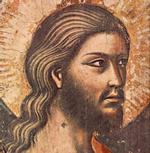Catholic Recipe: Fattigmands Bakkelse
Also Called: Poor Man's Cake
Fattigmands Bakkelse, or poor man's cakes, are a delectable little fried cake with a very tricky shape. In Norway they are popular at any season, but especially at Yuletide, when friends and relatives constantly drop in to exchange greetings and drink coffee. In some places fattigmands bakkelse are a standby of Annen Juledag, Second Christmas Day, when traditional hospitality requires passers-by-young or old, strangers or friends-to stop at every farm along the road and partake of food and drink.
Poor man's cakes contain enough eggs, cream, and other ingredients to make even a rich man poor. But they are so delicious in taste and pretty in appearance that no housewife can afford to ignore them.
In Norway, Christmas preparations start weeks in advance, with the slaughter of the family pig. Sad though the occasion is to youngsters in the family, the animal provides the hams and sausages, the pickled pigs' feet, the rich soups that everyone enjoys for Christmas feasting.
Jul is the season of peace to men and good will to animals. Traditionally, no bird may be snared or wild animal killed. There is a story of a bear that sheltered a farmer, lost in a Christmas storm. The following day the farmer returned with his gun, intent upon shooting the beast. Instead, the bear killed the man. Even his wife regarded the punishment as just, since the peasant had deliberately violated the ancient law of holiday peace.
Householders fasten sheaves of wheat to poles and erect them in gardens or barnyards, so the birds will have their share of Christmas cheer. On Julaften, or Christmas Eve, horses and cows are given extra portions of oats and fodder. "It is Christmas Eve, good friend. Eat well," was the farmer's traditional greeting in olden times, as he left the food at each animal's stall.
Christmas Eve starts at four in the afternoon, when village churches ring their bells and shopkeepers pull down shutters and lock doors. As the "Christmas peace" descends over the countryside, entire families assemble about the soup kettle in country kitchens. According to time-honored custom, each person eats a piece of fladbrod, or thin Norwegian bread, that has been dipped into the big kettle of molje, or broth. Molje, prepared from the liquids in which holiday meats are cooked, is rich and fragrant. For generations, the tasting ceremony has preceded the holiday meal.
Supper starts with koldt bord, a magnificent array of hot and cold appetizers, and ends with fourteen different cakes and sweets, and risengrynsgrot, or rich rice pudding, with a lucky almond in the center. The almond is important, for whoever finds it will be first to wed in the coming year.
After supper the children see the Christmas tree-carefully guarded behind locked doors from the day Father brought it from the woods by sledge. Lighted white wax tapers twinkle like a thousand stars and reveal the gilded nuts, eggshell toys, and gingerbread men with raisin eyes and frosted toes, that hang among the branches. The tree is a truly beautiful sight. But nobody touches a thing until Father has read the Bible story of the Baby in the manger, the shepherds, and the Star. Then the children join hands with their elders and walk around the tree, gazing at all the wonderful things and singing old carols.
Julenisse, the gnome with the red pointed cap and long gray beard, brings the presents. Youngsters know the little man well, although they have never actually seen him. He lives in the barn loft. Julenisse sees and hears everything. Children watch their manners, and on Christmas Eve they tiptoe to the loft with a big bowl of rice pudding for Julenisse's supper. Although they peer into all dark corners, they never even glimpse the red cap. But by morning the pudding is always gone and the bowl polished clean.
Whether you intend to celebrate Christmas Norwegian style, with fourteen different kinds of cakes, or just with two or three, fattigmands bakkelse should be included. They are easy to make, although at first glance you may wonder how an amateur cook can achieve the triangular shape with a hole in the center, and a tucked-in flap. The secret is in the cutting, as is described below.
DIRECTIONS
Sift together flour and cardamom and set aside. Combine unbeaten eggs, sugar, and brandy, and beat until thick and lemon colored. Slowly stir in cream. Gradually add flour mixture, about 8 tablespoons at a time. When thoroughly mixed wrap dough in waxed paper and refrigerate overnight.
Fill deep frying skillet one-half to two-thirds full of vegetable shortening. Heat the shortening slowly to 365?-370? F. If you have no thermometer, test temperature with 1-inch bread cube. When the cube browns in 2 minutes, temperature is approximately correct.
Roll out dough thinly, a small quantity at a time, on lightly floured board. Cut into diamond shapes that measure 5 by 2 inches. In the center of each diamond cut a 2-inch lengthwise slit. Pull one end through the slit and press down slightly. Fry as many pieces of dough at one time as will float, without crowding, on top of the fat. Fry 1-2 minutes, or until golden brown. Lift the frying basket from the pan and drain cakes on paper toweling. Put confectioners' sugar in a paper bag. When cakes are thoroughly drained, shake them in the bag. When cool store in airtight tins.
Recipe Source: Feast-Day Cakes from Many Lands by Dorothy Gladys Spicer, Holt, Rinehart and Winston, 1960





